The recent heatwave presents yet more evidence that we face a challenge ã and a huge opportunity ã to construct buildings that are thermally comfortable, energy-efficient and wellness-led, says Abhishek Parmar at HB Reavis

This spring was the UKãs fourth sunniest season since 1910 and we have just experienced the third 30ô¯C heatwave this year; London has recently been hotter than Barcelona and the Algarve. Combined with the sobering recent from the climate change committee (CCC) about the governmentãs inaction on the growing climate crisis, one thing is clear: the UK is heading for extreme weather and we are not set up to cope.
The Met Office forecasts and CCC send a clear warning: the climate risks that face Britainãs buildings are accelerating faster than government action. With extreme weather events, droughts, heatwaves and flash floods becoming the new normal, the built environment must adapt or risk becoming obsolete.
öÂûÉàÎs that overheat or are over-engineered to compensate will consume more energy than necessary and will ultimately lose market appeal. As homes remain largely unair-conditioned, commercial spaces will become sanctuaries. This presents a challenge and huge opportunity for developers to construct buildings that are thermally comfortable, energy-efficient and wellness-led.
>> Also read: Labour has made no progress on climate adaptation since gaining power, CCC claims
>> Also read: Is the UKãs infrastructure ready for 96mph storms?
>> Also read: Is it time to stop building in the wildfire-affected areas of California?
Our Worship Square development in London sets a new benchmark: net zero carbon from day one, with upfront emissions 50% below the UK Green öÂûÉàÎ Council (UKGBC) 2020 baseline. Powered by 100% renewable electricity, it uses high-efficiency air-source heat pumps and rooftop photovoltaics to provide thermal comfort without increasing emissions.
But resilience is not just about energy, it is about adaptability. Worship Square was designed with a circular economy approach, with 100% of demolition waste being diverted from landfill, prioritisation of recycled content, and a low-carbon steel frame (manufactured using an electric arc furnace) allowing for future disassembly and reuse. This flexibility supports refurbishment and change of use, which is key to future-proofing assets in a rapidly evolving market.
Nature-based solutions also play a vital role. In dense cities such as London, passive building design takes priority, but green roofs and biophilic interiors still offer powerful benefits. Worship Squareãs rooftop gardens and green heart lobby, which is home to over 3,000 plants, filter indoor air and support WELL credits, boosting wellbeing and therefore influencing productivity.
Automated seasonal commissioning platforms constantly re-tune building systems as weather and occupancy shift, sustaining up to 20% energy savings
Smart technologies are also transforming how we design and operate buildings. At Worship Square, predictive fault detection and diagnostics (FDD) identify issues before they affect comfort or uptime. Occupant-centric controls adjust lighting, heating, ventilation and air-conditioning (HVAC), and shading on real-time presence and preference. Personal carbon dashboards help users to understand the impact of their behaviour ã nudging more sustainable habits.
Automated seasonal commissioning platforms constantly re-tune building systems as weather and occupancy shift, sustaining up to 20% energy savings. These tools are not just about efficiency, they are about performance, comfort and long-term value.
Across the industry, we are seeing encouraging signs and even more ambitious strategies. Tools such as the embodied carbon in construction calculator (EC3) allow site teams to monitor carbon budgets live. Material passports are enabling circular construction by simplifying reuse and secondary market trading.
In Scandinavia, entire developments are built from salvaged materials, cutting lifecycle carbon by up to 86%. But, if we are to truly scale these innovations, we need to shift our mindset.
Developers must set clear, ambitious sustainability targets early in the process. This means earlier engagement with engineers, designing for disassembly, embedding digital twins and budgeting for biodiversity net gain ã not as add-ons, but as standard practice.
Investing in green skills through education, apprenticeships and professional standards, is essential to delivering buildings that meet our evolving needs
Landlords cannot achieve sustainability alone. Green leases must also hold tenants to the same, high standards that owners set for themselves. Tying rent reviews and service charges to measurable in-use outcomes like energy use intensity (EUI), NABERS ratings, waste reduction targets and material choices ensures accountability. Shared data platforms, sub-metering and joint improvement plans ensure that tenant behaviour aligns with building design ã supporting net-zero goals and protecting long-term asset value.
Current metrics like EUI, whole-lifecycle carbon (WLC), and BREEAM are essential, but they underrepresent climate adaptation. We need KPIs for overheating resilience, flood mitigation and adaptive capacity ã aligned with the climate change committeeãs call for clearer adaptation goals.
The market is ready. Demand for high-quality, sustainable offices is outstripping supply, with only 25% of available central London stock rated grade A. Yet the Part L öÂûÉàÎ Regulations still fall short, sometimes encouraging designs that underperform in real-world use. Sharing post-occupancy data from projects such as Worship Square can build investor confidence and accelerate green finance.
Skills are another critical piece of the puzzle. The UK will need 250,000 additional workers by 2028 to meet demand in sustainable construction, according to the Construction Industry Training Board. Investing in green skills through education, apprenticeships and professional standards, is essential to delivering buildings that meet our evolving needs.
The government must act too. The UKãs third national adaptation programme needs numeric targets, clear accountability and budget visibility. Mandating NABERS UK (or similar) disclosure for offices and public buildings would shift focus from paper compliance to real-world performance. Aligning tax incentives and procurement rules with verified outcomes would reward buildings that perform, not just promise.
Looking ahead, the trends are clear: net zero and circular construction are here to stay. AI-driven systems, high-performance renewables with storage and material passporting for reuse are already shaping resilient, future-fit developments.
When we talk about saving the planet, we are talking about saving people and preserving the ordered conditions that let communities thrive
At HB Reavis, our UK net zero pathway aligns with the 1.5ô¯C trajectory and is registered with the science-based targets initiative. Every project is benchmarked against top sustainability standards, with energy, water and waste tracked across our portfolio.
We have the tools. Now we need leadership from developers, architects, engineers and policymakers. Because the most valuable buildings of tomorrow will be those that are resilient, adaptable and built with purpose today. We all share the responsibility to drive growth while safeguarding people and the planet.
What we all need to understand is that, without us, the earth would eventually heal itself in a few millennia. When we talk about saving the planet, we are talking about saving people and preserving the ordered conditions that let communities thrive.
öÂûÉàÎs that are low carbon and adaptable are our best, integrated defence against the slide towards chaos, conserving energy, materials and human wellbeing.
Abhishek Parmar is head of sustainable development at HB Reavis








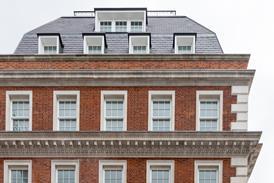
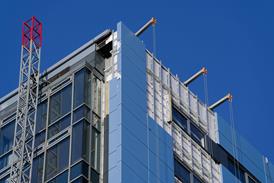
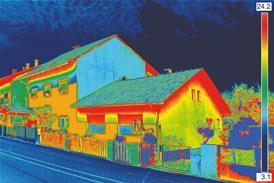

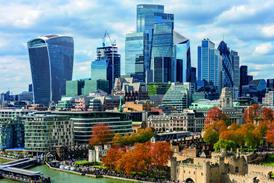
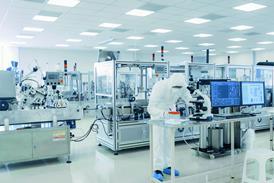









1 Readers' comment